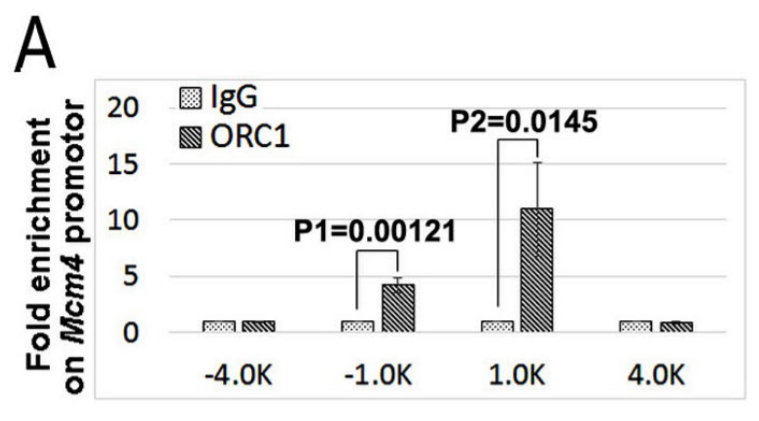Cat. #151191
Anti-ORC1 [ORC1 7F6/1]
Cat. #: 151191
Sub-type: Primary antibody
Unit size: 100 ug
Availability: 3-5 days
Target: ORC1
Class: Monoclonal
Application: IP ; ChIP ; ELISA ; IHC ; IP ; WB ; ChIP-seq
Reactivity: Human
Host: Mouse
£300.00
This fee is applicable only for non-profit organisations. If you are a for-profit organisation or a researcher working on commercially-sponsored academic research, you will need to contact our licensing team for a commercial use license.
Contributor
Institute: Cancer Research UK, London Research Institute: Clare Hall Laboratories
Tool Details
*FOR RESEARCH USE ONLY (for other uses, please contact the licensing team)
- Name: Anti-ORC1 [ORC1 7F6/1]
- Research fields: Genetics
- Clone: ORC1 7F6/1
- Tool sub type: Primary antibody
- Class: Monoclonal
- Conjugation: Unconjugated
- Molecular weight: 45-97 kDa
- Strain: Balb/c
- Reactivity: Human
- Host: Mouse
- Application: IP ; ChIP ; ELISA ; IHC ; IP ; WB ; ChIP-seq
- Description: Component of the origin recognition complex (ORC) that binds origins of replication. DNA-binding is ATP-dependent, however specific DNA sequences that define origins of replication have not been identified so far. ORC is required to assemble the pre-replication complex necessary to initiate DNA replication.
- Immunogen: Bacterially expressed Human ORC1
- Isotype: IgG1
- Myeloma used: Sp2/0-Ag14
Target Details
- Target: ORC1
- Molecular weight: 45-97 kDa
- Target background: Component of the origin recognition complex (ORC) that binds origins of replication. DNA-binding is ATP-dependent, however specific DNA sequences that define origins of replication have not been identified so far. ORC is required to assemble the pre-replication complex necessary to initiate DNA replication.
Applications
- Application: IP ; ChIP ; ELISA ; IHC ; IP ; WB ; ChIP-seq
Handling
- Format: Liquid
- Concentration: 0.76 mg/ml
- Unit size: 100 ug
- Storage buffer: PBS with 0.02% azide
- Storage conditions: -15° C to -25° C
- Shipping conditions: Shipping at 4° C
References
- Lu et al. 2016. Biol Open. 5(10):1449-1460. PMID: 27744293.
- Beck et al. 2012. Genes Dev. 26(23):2580-9. PMID: 23152447.
- Salsi et al. 2009. Mol Cell Biol. 29(21):5775-88. PMID: 19703996.
- Burke et al. 2001. J Biol Chem. 276(18):15397-408. PMID: 11278932.



